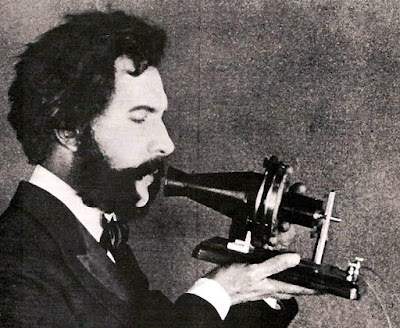5.The Compass
Originally invented in China between the 2nd century BC and the 1st century, the first compasses where made of suspend-able pieces of magnetised iron ore. The freely suspended iron ore would always point to the magnetic poles helping people to navigate and pin point there location.
4.The Telephone.
In 1831 Michael Faraday came up with the basic principles in communicating with telephones but in 1861, Johann Reis a German inventor who built a system that converted sound into a series of electrical impulses at different frequencies then converted the electrical impulses back,creating sound. Around 1876 Alexander Bell experimented with the idea which is now known as the telephone. Alexander started his telephone company called Bell Telephone Company and developed mobile technology in 1924 manipulating it until cells would be put in mobile phones around 1983, creating a steady communication link between people using them.
3.The Internet.
The internet is simply a Huge global networking system connecting thousand even millions of smaller networks together. The internet model was formed in 1973 American computer scientist, Vinton Cerf. The design of the internet was complete in 1973 and published in 1974. People using the internet peaked to over 25 million by 1996. The internet has truly revolutionised the world, allowing us to bring a endless vault of knowledge straight to our front door.
2.The Light Bulb.

The inventor of the first electrical light was a English man called Humphry Davy, whilst the man credited for inventing the light bulb is Thomas Edison. In 1987 Edison created a bulb with a carbon filament contained in a oxygen free glass bulb that would not expire for over 1,500 hours. William David Coolidge was the man who mastered the design to the light bulb by changing the carbon filament to a tungsten filament, the bulb would last much longer.
1.Penicillin
Discovered by Scottish scientist Alexander Fleming in 1928. Alexander said he came across the mould when a Petri dish had been left unattended nearby a open window. Growth of some sort had formed on the open dish which just happened to be penicillin. Our understanding of the mould grew significantly and is vastly used around the world to help fight off negative bacteria that affects our body.




